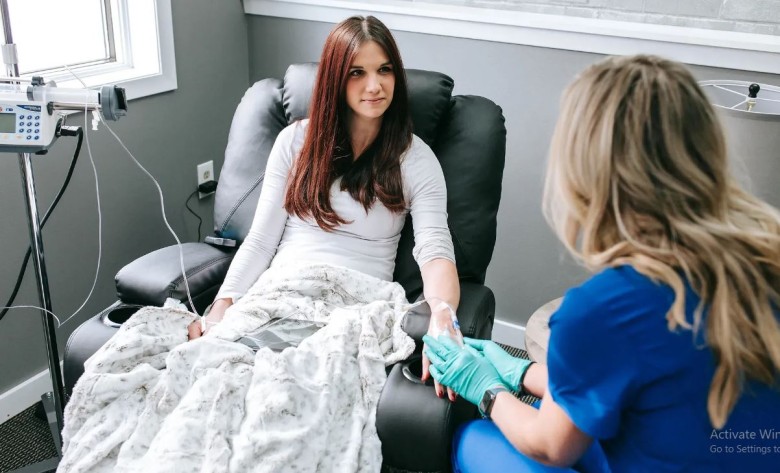 For many people living with trauma, the idea of starting a new mental health therapy can feel overwhelming. Traditional in-person therapy may trigger anxiety or make one feel emotionally unsafe, especially for those recovering from events like sexual abuse, domestic violence, or the loss of a loved one. For these individuals, at-home ketamine therapy may offer an alternative pathway toward healing.
For many people living with trauma, the idea of starting a new mental health therapy can feel overwhelming. Traditional in-person therapy may trigger anxiety or make one feel emotionally unsafe, especially for those recovering from events like sexual abuse, domestic violence, or the loss of a loved one. For these individuals, at-home ketamine therapy may offer an alternative pathway toward healing.
Why home matters for people living with trauma
When someone has experienced trauma, safety is more than physical. It’s emotional, psychological, and deeply tied to the environment. The comfort of familiar surroundings can make a real difference in how someone responds to therapy. A person who feels guarded in clinical settings may feel more at ease engaging in at-home ketamine therapy, which allows them to begin their healing in a space that doesn’t feel clinical or intimidating.
Feeling safe may also help the brain engage more openly in therapy. In psychedelic therapy, the concept of “set and setting” matters. “Set” refers to a person’s mindset and emotional state; “setting” refers to the physical space around them. Both affect how someone may process insights or experiences during ketamine therapy.
How ketamine therapy may help support recovery
Ketamine therapy works differently from traditional medications. Instead of needing weeks to build up in the body, ketamine may produce changes in perception and emotion within hours. Some people report feeling lighter, more flexible, or more open during therapy. This altered state may help individuals revisit memories or feelings from a new angle.
Researchers believe ketamine affects glutamate, a neurotransmitter linked to mood regulation. It also appears to spark neuroplasticity, the brain’s ability to create new connections. That may be why some people find it easier to shift thought patterns or break free from long-standing emotional loops after some sessions.
But ketamine therapy isn’t just about the medicine. Many programs include integration therapy, where clients process their experiences with a trained guide or coach. This step is helpful for people with trauma. Revisiting pain without support can feel destabilizing. With integration, clients may reflect on their experience, understand what came up for them, and decide how to apply it to daily life.
The structure of at-home care
With at home ketamine therapy, the process typically begins with a medical screening. This step helps rule out conditions that may make ketamine therapy unsafe, such as unmanaged schizophrenia or critical health issues. A medical professional will prescribe the therapy and provide detailed instructions if the person qualifies.
Sessions usually involve a lozenge-based form of ketamine, taken while lying down with eye shades and calming music. Most people have a guide or sitter nearby, sometimes a trained therapist, sometimes a trusted support person. After the experience, integration therapy follows. Depending on the program, this can happen virtually and may involve journaling, coaching, or breathwork.
For those with trauma, having control over these details like space, timing, and presence of trusted people can make a big difference.
Who may benefit, and who it may not be right for
At-home ketamine therapy may be helpful for people living with:
● PTSD from a traumatic event
● Long-term emotional fallout from sexual trauma or domestic violence
● Deep grief following the loss of one or more loved ones
● OCD that fuels anxiety or intrusive thoughts
● Social anxiety and depression that limit connection or self-worth
It may not be a good fit for people with active psychosis, certain heart conditions, or ongoing substance use issues. A proper medical assessment is always necessary before starting therapy.
Advantages of home-based therapy for trauma recovery
Here’s why some people find at-home ketamine therapy especially helpful:
● Familiar space: Reduces anxiety triggered by clinical settings.
● Privacy and control: You set the pace and structure of your experience.
● Reduced social stress: No need to navigate public spaces while emotionally vulnerable.
● Easier accessibility: Ideal for those with physical limitations or transportation barriers.
● More natural integration: It’s easier to reflect and ground insights when you’re already in your everyday environment.
A new path forward
People recovering from trauma deserve options that meet them where they are mentally, emotionally, and physically. At-home ketamine therapy isn’t right for everyone. However, for those who qualify and are supported through the process, it may help open doors that other approaches haven’t. And when healing begins in a space that already feels safe, recovery can feel less out of reach.




















Facebook Conversations
Disqus Conversations